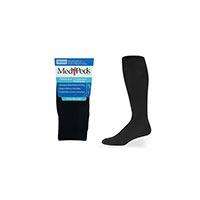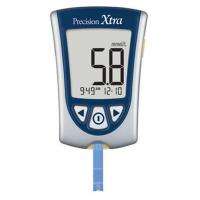
Packaged Hot Dogs (Supermarket Hot Dogs) for People with Diabetes - Benefits and Complications.Packaged Hot Dogs (Supermarket Hot Dogs) for People with Diabetes - Benefits and Complications.
  © Jerry Coli | Dreamstime.com There is hardly any food in America that is more tightly associated with the country’s culture than hot dogs. Imagine a baseball game, a barbeque party, the 4th of July celebration, a backyard weekend cookout, or simply a summer without hot dogs! They are such an integral part of American traditions that you probably will not be understood if you say no to a hotdog at a party even if you say that you are trying to lose some weight. It’s believed that hot dogs were introduced into American life back in 1800s, crossing the Atlantic ocean along with German emigration, since sausages had been a traditional food in Germany for a very long time by then. It is also believed that hot dogs, called “dachshund sausages”, gained their popularity from the time when they were sold in New York City by German emigrants out of food carts in the 1860s, which provides a possible explanation where the hot dogs’ canine name is coming from. Since that time, the hot dog has become a staple of the American cuisine, accompanying us in our everyday lives. All the festivities aside, during our ordinary days, a hot dog serves as a practical, nutritious food source, quickly and efficiently fueling us up on the run, at home, in the office, or in school, helping us to go about our busy lives without taking up much time on replenishing our energy. Up to recently, however, hot dogs haven’t been exactly a very healthy food option thanks to their high calorie, fat, and sodium content. In other words, your body wouldn’t appreciate your participation in a local hot dog eating contest even if you are a relatively healthy person. But if you have diabetes, hot dogs must be approached with caution despite their attractiveness, convenience, and association with American culture. For people with diabetes, it is recommended to say yes to hot dogs with calories count below 150, sodium not going above 450 mg, and fat content staying within 14 g (with saturated fat not exceeding 5 g), since healthy diet is imperative for diabetic people to reduce the risk of common diabetes complications like heat attack and stroke and to live a long, happy life. The good news is that hot dog manufacturers have been responding to the demand, generously filling up the isles of supermarkets with options for virtually every taste and health condition, by providing hot dogs widely ranging in their content. To help you navigate the hot dog market, we are going to show a few examples of what hot dogs to look for in a store and which ones to leave on a shelf and why. Let’s start from the good choices. Teton Waters Ranch Uncured Beef Hot Dogs 110 calories, 6 g protein, 9 g fat (3.5 g saturated fat), 320 mg sodium, 0 g carbs, per one hot dog. These ones are among the healthiest packed beef hot dogs you can get in stores. Considering the fact that these hot dogs are made with 100% grass-fed beef, uncured, meaning that they don’t contain sodium nitrites or nitrates, plus they are low on calories and fat, you simply can’t go wrong with Teton Waters Ranch uncured beef hot dogs. Saturated fat number, however, is better be lower, to be on par with other offerings on the market, plus these hot dogs are not exactly a good protein source.
Mixed meat: Healthiest: Applegate Naturals Stadium Beef and Pork Hot Dog 110 calories, 7 g protein, 9 g fat (3.5 g saturated fat), 360 mg sodium, 0 g carbs, per one hot dog. If you are in the mood for pork, but still want to enjoy a healthier hot dog, this mixed meat product from Applegate is your solution. Similarly to Teton hotdogs, these ones are also uncured and contain grass-fed beef and also light on calories and sodium, all of which makes it a good choice for diabetics. However, also similarly to Teton hot dogs, the amount of saturated fat is preferable to be lower while the protein content is better to be higher than what these Applegate hot dogs have to offer.
Al Fresco Spicy Jalapeño Chicken Sausage 110 calories, 13 g protein, 6 g fat (2 g saturated fat), 440 mg sodium, 2 g carbs (1 g sugar), per one hot dog. Want a chicken hot dog? – No problem. These Al Fresco sausages will give you a bold flavor (and some fire from jalapeño too), without loading you up on calories. Plus, it’s a good source of protein an very low on fat and absence of red meat in these hot dogs adds yet another benefit. Nevertheless, these Al Fresco hot dogs are a bit too generous on sodium and feature some sugar in their content, which is not something that people with diabetes want to see in meat products. Besides, those who don’t appreciate spicy food very much may get scared away by the presence of jalapeños.
Waterhill Naturals Uncured Turkey Hot Dogs 120 calories, 11 g protein, 8 g fat (5 g saturated fat), 360 mg sodium, 1 g carbs (1 g sugar), per one hot dog These turkey hot dogs are uncured, organic, and spiced to win your preference over the competition, with the intention to become your favorite choice of hotdogs. They are low on calories and provide a decent load of protein, while being very low on carbs as well. However, it’s fat content is a bit higher than some competitors offer and the saturated fat number is pretty high too.
Be Leaf Vegan Hot Dog 45 calories, 3.5 g protein, 1 g fat (0 g saturated fat), 360 mg sodium, 6 g carbs (2 g sugar) per one hotdog These hotdogs are in the totally different league as they don’t contain any meat. Made with wheat proteins and textured soybean, these hotdogs are super low in calories and don’t contain any saturated fat, which is a perfect combination for people with diabetes. Nevertheless, their advantage is also their disadvantage, as meat lovers might not find the taste of the Be Leaf hotdogs exactly on par with their expectations. Besides, the protein content of these hotdogs is also not exactly great if you would like to load up on protein.
There are plenty of other hotdogs on the market, however, although they could be tasty, you’d better not bring them home, since their calorie, fat, and sodium content can give you trouble if you have diabetes. Here are some examples of the hotdogs that you should avoid. Ball Park Uncured Beef Franks 180 calories, 6 g protein, 15 g fat (6 g saturated fat), 510 mg sodium, 4 g carbs (1 g sugar) per one hotdog Oscar Mayer Angus Beef Franks 170 calories, 6 g protein, 15 g fat (6 g saturated fat), 450 mg sodium, 4 g carbs (1 g sugar) per one hotdog Nathan's Beef Franks 160 calories, 6 g protein, 15 g fat (6 g saturated fat), 500 mg sodium, 1 g carbs (0 g sugar) per one hotdog Updog Vegan Hot Dog 170 cal, 20 g protein, 7 g fat (0.5 g saturated fat), 710 mg sodium, 8 g carbs (0 g sugar) per one hotdog Beyond Meat Original Brat Plant-Based Sausages 190 cal, 16 g protein, 12 g fat (5 g saturated fat), 500 mg sodium, 5 g carbs (0 g sugar) per one hotdog
Bottom Line Hotdogs are extremely popular in America and for a good reason – they’re delicious and very convenient. Virtually everyone loves them, but if you have diabetes, you’d better choose wisely as nutritional content of many of them is not suitable for diabetics. So before picking up a pack of hotdogs from a shelf in your local supermarket, make sure you read the nutritional facts and chose only those with the amount of calories, fat, and sodium being as low as possible. This way you will be able to enjoy the party without compromising your health.
| |||||||||||||||||||||||||




























